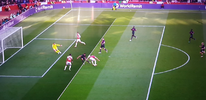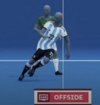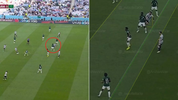- Aug 21, 2016
- 16,152
- 25,892
- AFL Club
- Geelong
- Other Teams
- Oldham
There's no could have been with semi automated offside. A sensor in the ball means the ball being played is known to the millisecond. Cameras track all players on the pitch. Their distance to the goal line is known as is their position compared to defenders.
Add up all this data and you get an accurate offside call. They can even tell if it come off a defender by the sniko.
Offside is a yes or no call. This was the right call.
Two different issues.
A decision could be correct but with the graphics we are shown there's a lack of transparency about the full picture of a crucial moment in the game.
The players don't have microchips in their toes. The data being fed from the cameras to the automated VAR has to be extrapolated and interpreted. So there needs to be a level of tolerance built into the system.










